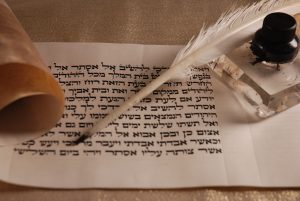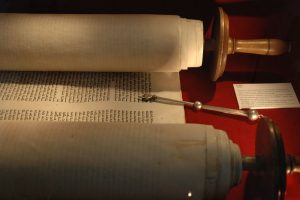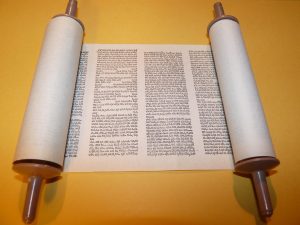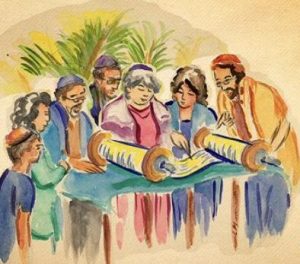Sofʻers Talk Story
Sof as a Community
October 2, 2020
By Sandra Z. Armstrong

As a community we have remained close, stayed together and reached incredible heights of ruach, creating uplifting, joyous zoom Shabbats for the last six months. Our experiences and spiritual connections on zoom are a community achievement of a lifetime.
What is the point of life if we live it without giving back to something much greater than ourselves?
What is the point of needless fretting and worrying about nitpicking aspects of our lives when so much more is at stake?
Compassion, kindness, and giving back to others are the ultimate redemption. If we can hold this thought, at all times and for all days, then perhaps we will become better and better human beings. When it is time for us to say our final goodbyes to the world and face our own destinies, then we will go in peace knowing every inch of our being reached out and made something or someone better.
Tikkun Olam and living a Jewish life in Hawaiʻi is easy when both an ocean and many Jews committed to Yiddishkeit surround us. As President of Sof Ma’arav, I can speak for our Sof community of 49 years. The power of love, the compassion, and the kindness that have been achieved over the last few months, to care about each other and our Jewish traditions, have been simply gifts from God.
I am speaking to all of you from the bottom of my heart with gratitude for listening to that inner voice inside you, the quiet one, the one that tells you right from wrong, and sits by you in times of great grief and pain, to continue listening and achieving our mutual goal of loving each other and this Hawaiʻi Jewish Community for every ounce that we have to give.
L’Shanah Tovah U’metuka!
Reading Torah on Zoom with a Traumatic Brain Injury
September 3, 2020
By Tamar Ramos

I have a traumatic brain injury. I found learning to read and write Biblical Hebrew, as well as reading the Torah with trope to be very helpful with my brain injury. Learning Hebrew and reading the Torah is like playing an instrument and for me that happens to be the guitar. During my studies, the two sides of my brain talk to each other. The left and the right side of my brain work together for these achievements, which helps my brain development. I had a positive feeling when I read for the congregation on Saturday, August 8, as I was able to recognize words and I was able to understand the power in the parsha that I read. When I read the aliyah, I knew that it was speaking to all of us who heard it that morning, as well as the Israelites way long ago. When Moses was speaking to the Israelites, he was also speaking to us at Sof Ma’arav at the same time. The words that I read were very deep and meaningful to my life.
My interpretation of the words are – you can either live by this or you won’t; it is your choice. God fed us, though we knew Him not, and He hungered us in order to humble us, of which we knew not. He did this for the generations that came out of Egypt as slaves. The words were carried from generation to generation right up to us today. Whether we live by His laws or not, is up to us. I will always remember the last line of the aliyah, which translates “man does not live by bread alone, but by the word of God.” Here is a partial translation of my reading:
You shall remember all the way which HaShem your G-d has led you these forty years in the wilderness that He might humble you, to prove you, to know what was in your heart, whether you would keep his commandments, or not. He humbled you, and allowed you to hunger, and fed you with manna, which you didn’t know, neither did your fathers know; that He might make you know that man does not live by bread only, but by everything that proceeds out of the mouth of HaShem does man live.
A Trope Trainer translation Shabbat Triennial year one in Devarim: Eikev 8:2-3
Mazie Cohen’s Son
July 16, 2020
By Kay Lorraine
I don’t know if this is true everywhere, but in the Jewish community in Columbus, Ohio, you are never really anybody on your own – you are just somebody’s kid. Even if you are 60 years old, you’re invariably introduced as Saul Irving’s son, David. Keeping this in mind, some of you know that I have been close friends with singer / pianist Michael Feinstein since he was in high school. I was the singer, he was my occasional accompanist. Between 1973 and 1975, we used to perform regularly at Heritage House (the Jewish old folks center in Columbus).
Now pay attention here or none of this will make any sense. At the time, my name was Kay Cohen because I was married to Bernie “the attorney” Cohen. (The less said about that, the better.) Michael Feinstein’s mother is the former Mazie Cohen, a shirttail relative of Bernie, whom she disliked intensely from childhood (showing excellent judgment on her part). Consequently, whenever we were introduced at Heritage House, they always introduced us as “Mazie Cohen’s son Michael and his lovely wife Kay.” No matter how many times we tried to correct them, we always got the same introduction. After a while, we just gave up and went with the flow.
Years later, I was divorced, living with Brad in Chicago, and I visited Michael, who was living in California, working for Ira Gershwin. One day Michael announced that he was headed to the Los Angeles Jewish Home, where he played piano at lunch maybe once a week. It would be just like Michael to continue that tradition – he has always been a generous giver. “Did I want to come along and do our old act?” Absolutely. We could trot out “Sunrise, Sunset,” and “Bei Mir Bist du Schoen,” at the drop of a hat.
We arrived and Michael took a minute to set up an extra mic (and obviously slip a note to someone). When it came time to go onstage, we were proudly introduced by the director of the home as, “Mazie Cohen’s son Michael and his lovely wife Kay.”
Nobody got the joke but me, but that is so typically Michael.
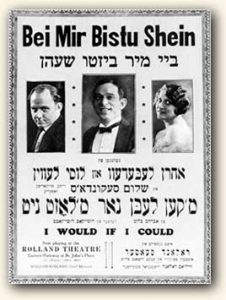
Just Being There
June 15, 2020
By Sandra Z. Armstrong

Sometimes you can’t do enough to help another person in distress—whether it is a family member, friend, neighbor, or stranger. Fretful thoughts intrude. Should I do more? Why do my efforts seem so futile? Will my help be enough?
Stop worrying. All you have to do is be there. We seem compelled to do more because showing up doesn’t seem to be good enough. Caught up in the frenzy of doing and redoing, we find it difficult to appreciate the value of just being there. We want to fix problems quickly, hoping they will disappear. But some difficulties take more time to properly resolve, more time than our spontaneous society allows. It is necessary to slow down and ask ourselves, “Is just being there, going to be enough?” Patiently, we realize, maybe “it is.”
Each week we attend services on Zoom for Congregation Sof Ma’arav as we are a small synagogue where everyone’s participation is important. When my family began attending services regularly (16 years ago), sometimes I felt uncomfortable about not participating in the service or sponsoring the luncheon that follows. Eventually, I realized being there is important, too. Maintaining membership and supporting the service with our presence means something. We help by just being there.
As I walked along the beach today, I thought maybe God wants us to be there for Him/Her, too. Caught up in the many details of our lives, we doubt that just being there would have any impact. Could a little time each day spent acknowledging God make a difference? We often forget to express gratitude for all our blessings. It only takes a moment or two to sit with God and just be there.
An Embarrassment to Jews the World Over
Apr 6, 2020
by Kay Lorraine
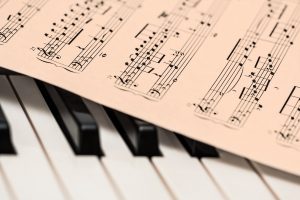
I am an embarrassment to Jews the world over. I know this to be true, because a cantor in Chicago made this statement in my presence, loudly, to a large group of Jewish women.
Let me explain:
It was Spring of 1978, and the sisterhood at my shul on the near north side of Chicago had an emergency meeting. Our joint Sisterhood/Hadassah Luncheon was the very next day and the entertainment that we had booked had been in an accident and was in the hospital. What were we going to do? It was Chicago, after all, so it wasn’t like there were no alternatives. The problem was money. We had booked a freebie and there wasn’t a line of professionals chomping at the bit to drop everything and entertain for free.
As it worked out, I had an old friend visiting me from California. He used to be my accompanist years ago and we were big favorites at the Heritage House Jewish old folks home back in Columbus, Ohio. With no effort, we could roll out our regular routine: “Sunrise, Sunset;” “Bei Mir Bist Du Schoen;” “Exodus;” and our finale “Yerushalayim Shel Zahav.” Depending on the time, my friend could also throw in a couple of rousing piano solos. Problem solved. The sisterhood breathed a huge sigh of relief. The next day the luncheon went fine. Afterward, the cantor of the shul was standing around talking to a large group of ladies. And he was talking about me! He criticized my Yiddish. He criticized my accompanist (“Some kid banging around on the piano.”) And he pronounced my Hebrew as “an embarrassment to Jews the world over.” It hurt my feelings terribly and I immediately sought out the Sisterhood President to apologize.
She explained that the cantor had been the singer at several past luncheons, and when the entertainment was hospitalized, he just assumed that he would be asked to step in to save the day. When they went with me instead, he was furious. Who knew? She said the entertainment was fine and I should just forget about the cantor, but I was humiliated and eventually switched to a different shul.
My singing was good enough for Mel Tormé. And the “kid banging around on the piano” was my friend Michael Feinstein (before he was famous), who played “I Love a Piano” and “Alexander’s Ragtime Band,” two numbers for which he later became internationally known. Oy!
What Does It Mean to Be Jewish in Hawaiʻi?
Mar 27, 2020
BY MAT SGAN AND ALEX GOLUB
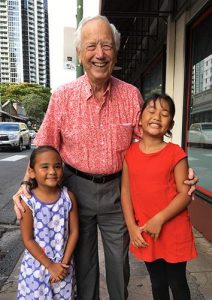
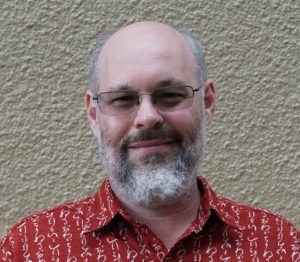
Published in Journeys, the Publication of United Synagogues of Conservative Judaism
Reprinted by Permission
When most of us imagine centers of American Jewish life, we are more likely to think of Manhattan or Los Angeles than the middle of the Pacific Ocean. So for us, and the other members of our Conservative shul in Oʻahu, Hawaiʻi, the question “What does it mean to be Jewish in Hawaiʻi?” is something we hear almost every Shabbat. Although many of our fellow Jews in Hawaiʻi have decided not to be involved in Judaism, we have made it our mission to emphasize the joys of Conservative Jewish observance and to continually invite others to join us to discover the answer to that very question.
Like many small Jewish communities, we work hard to maintain our culture and practice without the luxuries that come from living in places like Brooklyn or La Brea. Despite the challenges that presents, our small congregation of some 100 families has thrived for more than 40 years. How did this happen? When we set out as research partners to write a history of our congregation, we thought we would discover a story of resilience and community, which we did.
Yet, along the way, we also discovered something more surprising: that many of the things we considered our greatest weaknesses were, in fact, our greatest strengths.
Jews have been living in Hawaiʻi ever since the then-independent Kingdom of Hawaiʻi became a source of fresh food and supplies to the California gold fields and to ships that stopped in its ports in the 19th century. Jews trickled in and played various roles as merchants and even as advisors to monarchs. But they failed to form a sense of community.
With U.S. Annexation in 1898 and WWI came military activities and its attendant population multiplier. The center of Jewish religious activity shifted to the military and those associated with it. In 1959, when the territory of Hawaiʻi became an American state, a stronger Jewish community formed as Jews from the mainland moved to Honolulu, usually as part of their military service or to teach at the newly expanded University of Hawaiʻi. With the founding of Reform Temple Emanu-El in Honolulu in 1960, the civilian population began to develop a real sense of a Jewish presence in Hawaiʻi. In 1971, after feeling the need for more tradition-based Judaism than what was offered by the Reform temple, our Conservative congregation was established.
We originally decided to write a history of our congregation because we had noticed some of our founding members were getting a little grey in the temples and we wanted to make sure their stories would live on for future generations. As we interviewed members of our congregation, reviewed shul minutes and documents, and did library research, we learned stories that enabled us to construct a narrative highlighting the role our congregation played in so many Jewish lives in Hawaiʻi. This narrative is described in our book, Honey and Poi: The Origins and Development of Congregation Sof Ma’arav in Honolulu, Hawaiʻi.
Our name, “Sof Ma‘arav” or “furthest west,” is a reference to the medieval poet Yehuda Halevi’s poem lamenting that he was in Spain, while his heart lay in Jerusalem. We knew many of our members had moved to Hawaiʻi from the mainland. Therefore, we expected our story might be one of survival against the odds and nostalgia for the “old world” of the East Coast. But instead, we often found self-reliance was not a threat, but an opportunity that enriched us.
Sof Ma‘arav is a lay-led shul with no rabbi or cantor (although rabbis and cantors have at times been members of our congregation). Our members volunteer every week to leyn Torah, study Talmud and the parashah of the week, give a drash, lead services, educate adults and children and provide for the oneg.
A group can’t arrange something that demanding with just a few people; we’ve had to develop, to use a sports term, a “deep bench.”
We have found that when we are forced to rely on ourselves like this, people rise to the challenge and deepen their knowledge of liturgy, Jewish history, Israel, and what it means to be Jewish. The result has been a community where people have taken responsibility for their learning. We have a more educated, interactive, and capable congregation as a result. We like to think of ourselves as having the benefits of a larger synagogue and the warmth of a close family.
For years, Sof Ma‘arav has rented space from the Unitarian Church of Honolulu, which meets in a converted mansion in the valley of Nu‘uanu. This has given us a chance to form a strong interdenominational partnership with another faith-based community. Another not-to-be overlooked benefit of being in Hawaiʻi is that our sanctuary was originally designed to be a lānai (verandah). We can open and close the floor to ceiling sliding glass doors if the rain starts to come in or the rustling of the ferns and palm trees gets too loud on a lovely day in paradise.
In the course of our research, we also noticed some other, more subtle patterns in our history. One of the major concerns our history revealed was about replacement. Like many people in Hawaiʻi, we find that our children move away to the mainland for school and work and often don’t return. But, at the same time, whenever someone moves away, someone else moves in. We’ve been fortunate—or perhaps someone is looking out for us—to have new members move to Hawaiʻi and join our shul just when we seem to need new vitality the most.
Ultimately, researching and writing this book was a journey that really made us proud of our small community. We feel that Sof Ma‘arav has learned lessons that have not only helped us flourish but may be relevant for other congregations in other cities. In the long run, it may be that the best way to create an authentic and dynamic Judaism is not to bring Brooklyn to Honolulu, but Honolulu to Brooklyn!
Reading Torah at Sof
March 14, 2020
By Michelle Schneider
My Hebrew education began when my nonobservant parents sent me, at my request, to Sunday School for four years, culminating in my Bat Mitzvah. Until I discovered Sof, however, I basically attended synagogue on holidays only. Now I’m immersed in Saturday services, and, having drashed and led several Torah services, reading Torah has been the apex of my Hebrew training.
The experience also highlighted and reaffirmed the continual support, camaraderie, and sense of community I have always felt at Sof. With the help of Sandy, Dina and Gregg, I learned my parsha, though when I actually read, my voice quivered at times. Was I nervous? Yes, of course. But I think I was also suddenly in awe, realizing that here I was chanting the same verses that ancient tongues had sung for millennia.
Some time ago, Jack and I found a Judaica shop in New Orleans shortly before a special occasion for Adam Pack. I knew that reading Torah at Sof was a goal for Adam, so we gifted him with a yad. Unbeknownst to me, Jack purchased one for me as well, although I had no such aspirations at the time. Turns out Jack knew better than I did.
Yad In Hand
By Marc Flitter
Several Parshas ago I was honored to read from the Torah at Congregation Sof Ma’arav. Asked to share that experience, my first thought was that perhaps “Jewish geography” might more appropriately be utilized to mark where such reading opportunities have been afforded rather than to share the neighborhood locales and designated public schools of one’s youth. On a turning globe it would be the Torah readings, each marked with an inextinguishable flame, that would hail my tribal claims. For what other endeavor could confer such a timeless bond?
The act of the reading itself, the two-fold tasks of first recognition and then vocalization, was no less memorable. Once, at Har Shalom in Durango, Colorado, when standing before the congregation, yad in hand, I experienced a Chagall-like moment as the calligraphic imprimatur of an unknown scribe seemed to dance, upward from the parchment, individual letters that I was then challenged to corral.
The conflicting claims of trope were faced, questions of melody before meaning and style over substance. The choices, although moot to those schooled in the Talmudic clues that uncover the purpose of those incantations, called for my attention. But unsure of such studied measures, I sought, in the familiarity of the interlinear translated text, the power of simple meaning.
Lingering as well was an astonishing brush with near-idolatry, as siddurim and tallit were extended to touch the adorned and silver-plated mystery paraded in anticipation of the reading itself. Who wouldn’t tremble with awe while sharing the deciphered narrative contained in that purposed object of the procession, honored to rest and then unfurled?
Our beautiful Sandra, with great patience and persistence, expertly hewed, from the unproven stone of my prior silence, fixed pronunciations. Under her tutelage the absent vowels and cantillation marks seemed to emerge from the Pali mist to settle reassuringly upon the sacred words.
Finally, as an initiate reader, enveloped in congregational joy, as if being bar mitzvahed once again, I proceeded in great relief, wished from strength to strength, to the relative anonymity and certain comfort by the side of my adored wife.
How I Came to Read Torah at Sof Maʻarav
By Chad Teasley
As I read from parashah Tetzaveh at Congregation Sof Ma’arav on February 16th, it seemed to me that my Judaic education had come full circle. About six years ago, as I took the initial steps on my journey toward Jewish conversion, I visited Sof a handful of times at the suggestion of my friend and Judaic mentor, Dr. Dan Bender at the Aloha Jewish Chapel (AJC). Each time I attended Shabbat services at Sof Ma’arav, I was amazed at the Hebrew fluency and melodic harmony the baal korei exhibited during the Torah reading. Though I underwent elementary Hebrew instruction at AJC under the patient tutelage of Dr. Marilyn Landis, I was sure I would never be sufficiently skilled to chant the Torah.
In 2014, I transferred to Norfolk, VA, where I continued my Jewish conversion studies at Norfolk’s Temple Israel. On August 30, 2015, I entered the waters of the mikveh, and appeared before a beit din who admitted me as a full member of the Jewish faith community. Though my conversion experience was incredible, and I learned much from my wonderful rabbi and the synagogue family at Temple Israel, culminating in my adult bar mitzvah in 2016, I still felt that I was unlikely to ever possess the ability to publicly read the Sefer Torah.
After returning to Hawaii and becoming a member of Sof Ma’arav last year, I took Sandy Armstrong’s Beginning Hebrew class. As everyone at Sof knows, Sandy is an extraordinary teacher, who has a rare talent for inspiring her students. At the conclusion of the course, when she invited me to read the Torah in an upcoming Shabbat service, I was so motivated by her passion for Hebrew and Torah that I couldn’t help but reply, “Absolutely! I would love to do that!” A month and a half later, after several Torah trope tutoring sessions with Sandy (both in-person and on the phone), as well as a practice Torah reading under Dan Bender’s supervision at AJC, I had the honor to read from the Sefer Torah before the Sof Ma’arav congregational family. That was truly one of the great moments of my life.
Back when I started my journey to Judaism half a dozen years ago, and believed that I would never have the ability to read Torah, what I did not anticipate was the inspiration and assistance of Judaic teachers and mentors like Sandy Armstrong, Dan Bender, Marilyn Landis, and Rabbi Dr. Michael Panitz of Temple Israel. Nor had I foreseen the incredible fellowship and support extended by the members of Sof Ma’arav, the AJC, and Temple Israel. That support, guidance, and fellowship were what allowed me to read the Torah, and attain this tremendous milestone in the progression of my Jewish observance. For that, I will always be deeply grateful.
Chanting Torah
By Linda Lingle
We always feel a great sense of accomplishment when we achieve something we doubted we could—learning to surf, speak a foreign language, fly an airplane, or master a musical instrument. I decided to learn to chant Torah for the same reason you would learn to do one of the skills listed above—to prove that I could achieve something difficult. For a whole year, I had seen others, week after week, walk to the bimah, stand as the Torah was opened, and chant Hebrew words that matched the English I had read for the parshah that week. Some readers had beautiful voices and great articulation. The better they were, the more I doubted it was something I could ever do because I am nearly tone deaf. And, for the life of me I couldn’t figure out how they knew how to pronounce each word since there are no vowels in the Torah. And what was “trope,” anyway? It all became clear during trope class with Temple President Sandy Armstrong and my fellow students. With support from all of them, what had seemed unknowable just months earlier became another notch on my achievement belt. But this skill gave me so much more than bragging rights—it gave me a connection to my fellow Jews, at Sof Ma’arav, around the world, and throughout all time. The tradition of reading Torah out loud dates back to the time of Moses, who would read the Torah publicly on Shabbat, festivals, and Rosh Chodesh. Being able to chant Torah is more than a mere skill. It is a chance to connect to who you are, where you came from, and what your obligation is in the world.
The Story of Torah Trope Class at Sof Ma’arav
By Sandra Z. Armstrong
Studying Torah and learning how to read from the Torah is the greatest equalizer of a Jewish Community. It does not matter where you went to school/college, what career you have chosen, where you live, whether you still work or you are retired, who you like or dislike, what your hobbies are, what trope cantillation you ultimately choose, or anything else. What it requires is a commitment to go beyond your everyday life, that often contains a lot of minutiae, in order to clear the way to learn how to read, and accomplish the task of reading out of the Torah. This is our accomplishment at Congregation Sof Ma’arav in the last secular year.
Eventually nine students made the commitment, worked through the fear, and stood up to be counted as Torah readers. There really are no words to describe the beauty of watching a student stand up and read. A student that perhaps just weeks ago could barely get all the Hebrew words, a student who had to spend more time, more days to accomplish what seemed like an enormous task, and then the outcome is here, to stand before God and community in front of their peers and connect ultimately to heaven in a way that they never thought possible. The spurts and starts, the choices of an aliyah, the missed phone calls for help, and the phone calls for celebrations.
The practice times at Sof Ma’arav were after services. Gradually there was an increase in knowledge, in confidence, and in ability to learn the words without vowels. Adding trope musical phrases and conquering the fear of, what if I make a mistake? were the background to the day. No matter what was going on in their lives, or the lives of others around them, they took the time to sit quietly with God, in order to reap the benefits of becoming closer to Him/Her, and to ultimately become closer to the person they were meant to be on earth. It is in the process, the quiet moments of studying Torah, that an individual becomes a holy being. There is no gift greater on earth for me as a teacher than to be a part of the transformation of a student who begins this process of chanting Torah with very little background or knowledge, and then to hear and see with my own eyes the beauty of it unfold on the bimah.

Steps to a successful Torah reading class:
1). The first step is to organize a Torah trope class using “ The Art of Torah Cantillation” by Cantor Marshall Portnoy and Cantor Josee Wolff. This book is particularly helpful because each chapter teaches a specific combination of cantillation of the musical notes or phrases. At the end of each chapter there are examples from the Torah of the clause or phrase that we have just learned. This class is approximately four months long, every Saturday at Sof Ma’arav after our lunch in the Oneg room. Each student is also encouraged to look for trope cantillation on the web and come back to share with the class. In this manner, students are able to learn the current trope phrase in a manner that suits their individual needs.
2). The next step is to teach the musical notes that accompany the trope with a music sheet complete with the names of the notes and trope combinations. During class, I played the actual notes on the piano to confirm the musical cantillation.
3). I had not studied trope that intently for many years nor had I taught this class before, so it became a learning experience for me and everyone else. I had to prep each week and study quite a bit to get ahead of the students. I played the trope on my piano at home and set the pace of our weekly lesson. The next step I took was to send out a weekly email to the trope class to update them on what we are currently studying and encourage their participation along the way.
4) And here is when it got to be a lot of fun, when we came together each week and reviewed. Sometimes we had to have “therapy sessions” on the sounds of the notes and the combinations. Some people couldn’t sit next to others because it would throw their trope singing off. We laughed hard sometimes and we encouraged each other to keep going. Yet, this sense of learning in a community something so important and new became an exciting and enjoyable group effort.
5). The challenge then begins! I purposely waited a couple of months and then sent the email to the class with possible “short” doable Torah readings with easy trope cantillation coming up in the near future. I asked, who wants one and when? I set the bar higher, knowing the class was ready to take the plunge and actually read out of the Torah. Overcoming the fear of standing up at the Torah and reading an aliyah was now becoming an attainable goal.
The end result was a very high success rate of Torah readers. And we are still climbing. What happened was simply a Sof Ma’arav community effort of like-minded individuals who wanted to achieve a goal that once seemed too big to take on alone. As each former student stood up and read, this positive energy encouraged more readers, to the point that even some members of the initial trope class, who were on the periphery of learning to read Torah, came back in full force, learned to read, and have read several times since. In addition, members of the Introduction to Biblical Hebrew class decided they wanted to become Torah readers too. In my opinion, Torah reading is attainable for anyone with the desire to do so and the encouragement of a community. Now Torah reading by these incredible students is commonplace among us. Who would have ever thought? Will I teach another Torah trope reading class? Of course!
Todah rabah to Hefcibah, Les, Chad, Bill, Linda, Michelle, Tamara, Risa and Marc who showed me the possibilities of human connection to the Almighty with great joy resulting in the powerful impact of a community based achievement.
My Conversion: My Birthday Present to Myself
Jan 16, 2020
Kay Lorraine
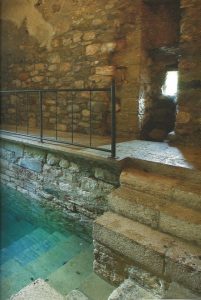 November 24th was my birthday, but it was also the anniversary of my conversion to Judaism. Fifty-two years ago, on my 21st birthday, I went to the mikveh as my birthday present to myself. My conversion was an interesting journey that took two-and-a-half years to complete.
November 24th was my birthday, but it was also the anniversary of my conversion to Judaism. Fifty-two years ago, on my 21st birthday, I went to the mikveh as my birthday present to myself. My conversion was an interesting journey that took two-and-a-half years to complete.
I was 18 years old and had a newborn child. My rabbi, Rabbi Baker took me in after refusing my application to convert three times. I learned that it is customary to turn down potential converts as many as three times. The most common explanation is that rabbis want to test the resolve and dedication of the potential convert. This Rabbi, however, described Judaism as a very difficult life, often filled with prejudice and discrimination. He said, “We set obstacles in your path so you can experience what it’s really like to be Jewish.” And just to prove it, he said “no” again. He turned me down three more times before finally relenting.
Converting Orthodox requires a course of both formal and informal Jewish education. The informal part happens through a network of congregants who taught me how to keep a kosher kitchen, how to prepare for Passover, and how to fit into Jewish society. While the particulars of observance can be learned from books, the totality of Jewish life can only be experienced by living in a supportive, teaching community. I became close with the rabbi’s wife.
I studied with the rabbi twice a week. I had to take a number of tests, both oral and written, on Jewish culture, customs, history and halakha. I was also required to show that I had performed enough mitzvahs to qualify as tikkun olam. In other words, I had to prove that I was good enough to be a Jew. I also took a year’s worth of night classes in Hebrew. (Anyone who has ever sat in front of me in shul knows THAT didn’t take.)
My beth din consisted of three rabbis from our congregation. Because my shul was, at least at that time, borderline Hasidic, we had lots of rabbis to choose from. Once they had declared me ready, I had to wait for the rabbinical court to approve my conversion proceedings and set a mikveh date. I had specifically requested my 21st birthday.
On my birthday, I woke up with butterflies in my stomach. Just after noon, I entered the mikveh house (in Columbus, it really was an old house). The Rabbi’s wife was my escort. She examined me for any cuts or sores, which would prohibit my entering the mikveh bath. I had to remove any Band-Aids. My hair was thoroughly brushed. The Rebbetzin supervised as I closely clipped the nails on my hands and feet. There could also be no trace of cosmetics or nail polish. Because you are required to be thoroughly cleansed immediately before the immersion, I then took a long shower. Finally, I was ready for the mikveh.
My conversion had to be “witnessed” by my beth din. Since they were all men (remember, we’re ultra-Orthodox here) they were in the mikveh room but were behind a folding screen so they could hear but not see. For modesty purposes, I was instructed to wear a bathrobe to the mikveh water, just in case there might be one final, impromptu test by the beth din. Thankfully this did not happen. Once immersed, I removed the bathrobe and submerged my naked body totally. Not even a single hair can remain above the water.
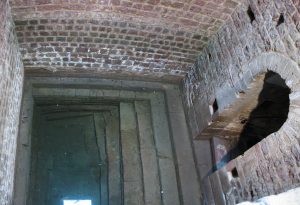 When I came up for air, the Rebbetzin put a washcloth on my head before I said, “Barukh atah Adonai Elo-henu melekh ha’olam asher kideshanu b’mitzvotav v’tzivanu al ha’tevillah.” I said this blessing after the first immersion, but not before. The reason for this is that one cannot declare “G-d commanded us” if one is not commanded by G-d because he or she is not Jewish. The convert becomes a Jew only after the immersion is completed. I did this immersion and blessing twice more and finally, ta-da! I was a Jew.
When I came up for air, the Rebbetzin put a washcloth on my head before I said, “Barukh atah Adonai Elo-henu melekh ha’olam asher kideshanu b’mitzvotav v’tzivanu al ha’tevillah.” I said this blessing after the first immersion, but not before. The reason for this is that one cannot declare “G-d commanded us” if one is not commanded by G-d because he or she is not Jewish. The convert becomes a Jew only after the immersion is completed. I did this immersion and blessing twice more and finally, ta-da! I was a Jew.
Each conversion is unique. I have heard of instances where the beth din requires you to vow to give up any former religions and take an oath to Judaism. I didn’t experience anything like that. I guess they thought that after 2½ years of non-stop learning, my dedication to Judaism was pretty much understood. I am also told that a big deal for most converts is the choosing of a Hebrew name. A convert is as a newborn child, k’tinok she’nolad. A new person needs a new name. Once again, my conversion did not feature this, since my rabbi believed that all female converts automatically take the Hebrew name of Sara. Thus, I am Sara bat Abraham v`Sara or more formally, Sara bat Abraham Avinu v` Sara Imenu.
When I removed the wet washrag from my head, I immediately put on my wig, my sheitel. My sheitel happened to be reddish with bangs. There are those in my old shul in Columbus who have never seen me without a sheitel and have no idea that I am blonde.
As soon as I left the mikveh house, I did what any right-minded Jew does: I headed over to Blocks Deli to celebrate. It was a good day.
Crosses and Kaddish: How a Jewish Convert Mourns a Catholic Grandmother
Jan 15, 2020
Athena DeRasmo
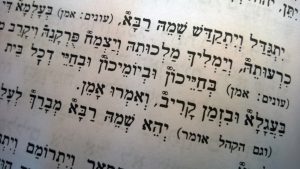 I was not baptized or raised Catholic; but my precious grandmother Marie surely was – old school Portuguese, Roman Catholic. However, when I was growing up, I did not see much evidence of her practicing her religion. It was the 60s & 70s. Time Magazine asked, “Is God Dead?” People were putting aside traditional religion and embracing other forms of spirituality. Grandma opted for a gentler observance – not orthodox, not born-again, nothing “exotic” — a kind of Christian light.
I was not baptized or raised Catholic; but my precious grandmother Marie surely was – old school Portuguese, Roman Catholic. However, when I was growing up, I did not see much evidence of her practicing her religion. It was the 60s & 70s. Time Magazine asked, “Is God Dead?” People were putting aside traditional religion and embracing other forms of spirituality. Grandma opted for a gentler observance – not orthodox, not born-again, nothing “exotic” — a kind of Christian light.
Fast forward to 2019, and my tiny grandmother voices a preference for a Catholic Mass funeral. Recently, we had been to the Catholic funeral for one of her sorority sisters, and it seemed that all the fondness for her closeted faith found its way back to her 95-year-old heart and mind. It wasn’t too many months later that her active dying began. In the end, she crossed herself a lot, and prayed to Jesus. A friend helped her to pray the rosary, and a priest was called for last rites. This was about her needs, her desires, her transition – and there was no place for any of my Jewish sensibilities or proclivities, not here, not now.
So now that she is gone, how do I, an observant Jew, mourn her and still minister to the plethora of particulars that comprise a goyish memorial service; a Catholic one no less! The Jewish traditions seem very focused on the needs of the living family, whereas the Catholic traditions are very focused on the needs of the deceased – and I am feeling the “pull.”
So, I will say Kaddish, and schedule the cremation, I will light the memorial candle, and book the church, I will wear a black tear ribbon, and hire caterers, I will suspend all plans for merry making for 30 days and formulate the memorial program and reception. I will light Hanukkah Candles, and write and run an obituary. There will be no sitting Shiva for me, but there will be flowers, many flowers for her.
Whatever the window-dressing of tradition, any tradition – in the end I will never speak to or see my grandmother again, and I will miss her for the rest of my days. My loss is neither Jewish nor Gentile – it is very human.
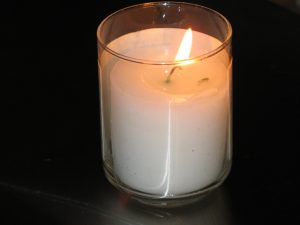
Toledo: The Tale of Two Synagogues
Dec 10, 2019
By Kay Lorraine

After the expulsion of the Jews at the end of the 15th century, eight of Toledo’s ten synagogues and its five Talmudic schools were destroyed. The two remaining synagogues in Toledo are no longer used for religious purposes but are open for educational purposes. And the difference between the two is dramatic. The first synagogue you find inside the Jewish Quarter is owned by the Catholic Church. There is absolutely no mention of the original name (Ibn Shushan Synagogue) anywhere on the building. In 1550, about 150 years after the massacre in which virtually all the Jews of Toledo were slaughtered, an order of monks renamed the building Santa María La Blanca in an effort to drive out the perceived “darkness” of the building’s Jewish past. The Catholics charge a healthy admission fee to get into the synagogue and the adjoining “museum.” They tout the museum as a big attraction. What you get for your money is a totally empty building, except for a cross, and a Christian propaganda display.
I have no problem with Christian symbols. Good grief, I was raised Methodist. But I find it deeply offensive and inappropriate that the Catholic Church is charging money to tour a synagogue where they have prominently displayed their cross. The entry fee includes the “museum.” In reality, it is merely a room where a nun will sell you propaganda about the Fraternidad Maria Estrella de la Manana, canonically founded in 1999 by His Excellency Braulio Rodrigues Plaza. This foundation is “inspired by the Holy Spirit and nourished by the spiritual doctrine of St. John of the Cross… due to the rupture between Israel and the One True Church.” The nun will also accept additional donations. That’s their Jewish “museum.” Period.
There is a group of Spanish Jews out of Madrid who have petitioned the Archbishop of Toledo to transfer ownership and custodianship of the property to them. The Church does not even acknowledge their request. The building is being used for no religious purposes, but I suppose it does raise quite a bit of money for the Catholics from admission fees. By comparison, the other synagogue in Toledo is the Synagogue of El Tránsito. It is owned by the government of Spain, not the church. We paid nothing to get in. There is a sizeable Jewish museum attached to the synagogue. They also have done extensive archeological excavations that are open to the public at no cost. Among the things discovered in the excavations is an ancient mikvah.
The interior of this synagogue is beautiful. It is famous for its rich Nasrid-style polychrome stuccowork, which bears comparison with the Alcazar of Seville and the Alhambra palaces in Granada. The ceilings rival some of the great cathedrals, and women’s section in the balcony is decorated with intricate molding and Hebrew inscriptions that go all the way around the sanctuary. No part of the synagogue seems to be off-limits to tourists. The accompanying museum contains a wide assortment of Judaica, including ancient menorah, shofars, beautiful candlesticks, kippahs, tefillin, mezuzahs, kiddish cups, challah covers, etc. Each one has a detailed explanation so that non-Jews can understand the significance and appreciate the artistry. The government has also gathered abandoned Jewish tombstones from all over Spain and made a lovely garden of remembrance within the Synagogue grounds. There are no bodies there – just stones that they are preserving. There is absolutely no Christian propaganda being distributed in the Synagogue of El Tránsito.
Before leaving Toledo, I saw two other things that highlight the way the Spanish just don’t “get it” about what they did to the Jews. There are “Inquisition Exhibitions” in virtually all of the major cities, so that people can view the “ancient instruments of torture” for their amusement. One of them was right around the corner from our hotel and it had several examples of the torture-toys on display behind a window; people were constantly holding their children up to the window so that they could be entertained by them. Another was a detailed explanation in the town cathedral describing the way the Spanish consider the “conversions” of the Spanish Inquisition and the “decline of the Jews” to be just a part of the “Golden Age” of Spain. Gee. Just when you think it is safe to go back into the water…
The Last Jews in Grenada
Dec 9, 2019
by Kay Lorraine
In August and September of this year, my husband and I rented a car and traveled throughout Spain, soaking up the culture (and some fine food). I knew, of course, about the Spanish Inquisition but I was so naïve, I didn’t realize how widespread the consequences of it are still being felt today.
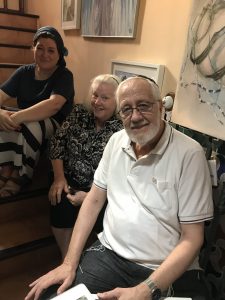
Image 1: Gabriel and Beatriz Perez. The only two Jews in Granada.
The Last Jews. This is Gabriel Perez and Beatriz Cavalier Perez. They are the ONLY Jews in Granada (population 255,000). In 2013, they opened the Sephardic Museum of Granada to help shed light on an ancient community which flourished there until the expulsion of the Jews from Spain. Gabriel and Beatriz are unique because in most places in the Iberian Peninsula of Spain there are no Jews left at all. None. Zero. Nada. As Brad and I traveled around southern Spain, I became almost obsessed with finding an active shul. When I was unable to find any Jews at all, I started to do some research, and this is what I learned:
From the 6th through the mid-11th centuries the Jews of the Iberian Peninsula were generally accepted in society and Jewish religious, cultural, and economic life flourished.

Image 2: The museum created by Gabriel and Beatriz Perez.
Prior to 581, the Visigoths were mainly indifferent towards Jews and allowed them to grow and prosper. Once the Visigoths joined the Catholic Church, however, they began to persecute the Jews. No wonder the Jews welcomed the Muslim Arab conquerors in the 8th century.
Under Muslim rule, Jews prospered culturally and economically. They dominated the sciences (mathematics, astronomy, botany, and medicine) and arts (philosophy and poetry) and some notable figures held high posts in the Caliphate of Cordoba. Muslim Spain was probably the biggest center of contemporary Judaism in the entire world. There was still some persecution of the Jews, but it was nevertheless better than the rest of Europe.

Image 3: These Magen David symbols are in the walkways from the days when they showed the entrance to the Jewish Section of Granada.
With the death of Al-Hakam II in 976, the position of the Jews became more precarious. The first mass persecution of Jews on the Iberian Peninsula under Islamic rule was the 1066 Granada Massacre. A Muslim mob massacred many of the Jewish population of the city of Granada. More than 4,000 people from 1,500 Jewish families were slaughtered in one day.
Many Jewish scholars then fled the Muslim-controlled portion of Iberia for the city of Toledo, which had been re-conquered by Christian forces. For the next 350 years, Toledo was a thriving Jewish quarter of approximately 50,000 Jews. It became a great intellectual center, famous throughout Europe.
By the 14th century, however, the Catholics began a systematic “cleansing” of Spain. A full-scale pogrom broke out in Seville on June 6, 1391. The infuriated populace attacked from all sides, plundering and burning the Jewish houses. Many fell victims to the mob’s fury, although some of the Jews accepted baptism to save their lives. At this point, the so-called “Jewish problem” became the “converso problem.” As a result, the once vibrant Jewish community never recovered and, along with the other Jews of Andalusia, they were exiled in 1483, 9 years before the final expulsion.
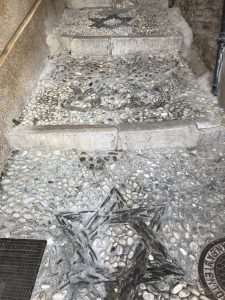
Image 4: These Magen David symbols are in the walkways from the days when they showed the entrance to the Jewish Section of Granada.
In 1328, 5,000 Jews were killed in Navarre. In 1355, about 1,200 Jews were murdered in Toledo. The pogroms continued from 1360 to 1366. Henry de Trastámara and his brother invaded Castile and murdered the entire Jewish population of Najera, Villadiego, Aguilar, Paredes, Palencia and many other towns. 300 Jewish families from Jaén were taken as prisoners to Granada.
The massacres of 1391 slaughtered 4,000 of Seville’s 7000 Jews. In Córdoba the entire Judería was burned down; factories and warehouses were destroyed by the flames and the corpses of 2,000 Jews lay in the streets. In the city of Toledo, Jews were burned at the stake, subjected to forced conversions and a blood bath of mass murder.
In 1481, thanks to Queen Isabella and King Ferdinand, the Spanish Inquisition started, with its headquarters at the Castillo San Jorge in Seville, targeting Jews among other groups; in 1483 all Jews were expelled from the city; and in 1492 the Alhambra Decree required all of Spain to be free of Jews and expelled all who would not convert to Christianity. Half of the country’s 300,000 Jews left, many for Portugal; the rest were forced to “convert” and a few stayed in hiding. Eventually, they traveled north to escape further persecution.

Image 5: Lucena’s Jewish cemetery. Unfortunately, it was locked up when I visited but I was able to take some pictures through the fence.
On our way to Cordoba, Brad and I took a side trip to go to Lucena where, during construction of Lucena’s southern ring road, in 2006, they accidentally discovered 346 tombs, dating from the 8th century to the first half of the 11th century, when Lucena was an important center of Andalusian Jewry. The Jewish Necropolis of Lucena is believed to be the oldest known Jewish cemetery in Spain. The local government has been working closely with UJCARE (Federación de Comunidades Judías de España) and the CPJCE (Committee for the Preservation of Jewish Cemeteries in Europe) to preserve the Necropolis and its cultural significance. In December 18 of 2011, 170 remains of Kedoshim that had been exhumed during the construction work were reburied in the cemetery. The reburial was carried out by members of the Chevra Kadisha of Madrid, under full Halachic guidance of the Rabbinical Board of the CPJCE.

Image 6: Many of the tombs consist of a pit and side chamber.
I traveled to Seville, Jerez do la Frontera, Córdoba, Lucena, and Toledo, I asked repeatedly and could find no evidence of a single Jew left in any of these cities. Is there a “Jewish Section?” Sure, sometimes. Are there shops there selling Judaica? Yes, and they are universally manned by Spanish gentiles, more than happy to take your money.

Image 7: Although I was not able to enter, I was pleased to see that at least one community cared about the history of the Jews in Spain.
The Jews of Spain (south of Madrid) simply ceased to exist.
I physically went to whatever is left of the Jewish Quarter of every city I visited in Spain on this trip. Mostly there is nothing to see except a brief plaque about what used to be there. It is very sad.
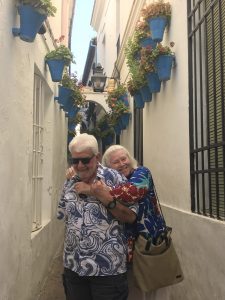
Image 8: Here we are in the lovely flowered streets of the old Jewish district of Cordoba. That’s pretty much all that’s left of the Jews here. The Jewish district began with the construction of a wall during medieval times that separated Jews from the rest of the city.
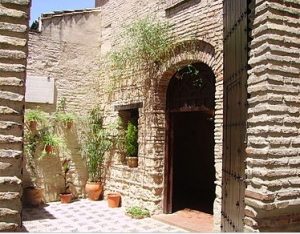
The only synagogue in Cordoba.

This marks the beginning of the Jewish Section in Toledo.
Pictorial Log
(goes with the pictures)
- Gabriel and Beatriz Perez. The only two Jews in Granada.
- In their little museum, they have created a sukkah to show Gentiles the Sukkot traditions.
- These Magen David symbols are in the walkways from the days when they showed the entrance to the Jewish Section of Granada.
- Once again, the entrance to the former Jewish Section of Granada.
- Lucena’s Jewish cemetery. Unfortunately, it was locked up when I visited but I was able to take some pictures through the fence.
- Many of the tombs consist of a pit and side chamber.
- Although I was not able to enter, I was pleased to see that at least one community cared about the history of the Jews in Spain.
- Here we are in the lovely flowered streets of the old Jewish district of Cordoba. That’s pretty much all that’s left of the Jews here. The Jewish district began with the construction of a wall during medieval times that separated Jews from the rest of the city. Isn’t that lovely? (I’m being snide.)
- The only synagogue in Cordoba – but it’s empty and nonfunctional, so there’s nothing to see.
- This marks the beginning of the Jewish Section in Toledo.
Quotes from Sof
Oct 10, 2019
Sof Maʻarav evokes strong emotion from its membership. Here are some quotes that show how our members feel.
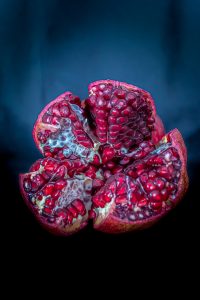






| Gayle Goodman
Sof Ma’arav is like being part of a dance where we all come together, like a beautiful symphony where the parts come together to make an inspiring and uplifting whole. |
| Celia Diamond
Wish I could be there! Greetings to all and L’Shanah Tovah to you and your family, and to everyone at Sof. I think of you all the time and amuse the Havurah here by doing Gregg’s little dance when we sing “V’sham’ru.” (I tell them it’s in honor of Gregg and Sof.)
|
| Risa Dickson
While I was raised in a small Jewish community in the south, I have never felt such a strong sense of belonging and grounding as I do as a part of the Sof community. It’s a bit ironic that I was able to find and embrace my Jewish self in the most remote place on the planet. Though I currently work in California, my heart is always with my Sof ʻohana and I cherish the trips home when I can be with my community. |
| Roz & Arnie Steinberg
We came to Hawaii to see your beautiful islands and celebrate our anniversary. It’s been a fabulous trip and being in your shul was the icing on the cake. We loved being part of your Minyan!! Shanah Tovah Umtookah to you and all the wonderful people we had the pleasure of meeting. |
| Jonathan Lewin
I found a wonderful family-like atmosphere at Sof Ma’arav that made me wish that I would pull up my roots and join you. But, for the moment, that’s impossible. Although I’m 77 years old, I’m still at my full-time job as a professor of mathematics at Kennesaw State University and, in fact, I’m more active in my work than ever before! |










To Seek Life: Upon My Mother’s Yahrzeit, I Remember
August 28, 2019
By Sandra Z. Armstrong
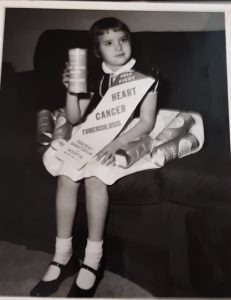
I was born Sandra Zimmerman, with a ventricular septal defect (VSD) – a hole in my heart. For some born with a VSD, the hole closes naturally. Mine did not. In 1922, Dora Moness Shapiro established Deborah Heart and Lung Center with the motto “There is no price on life.” The surgery would have been $25,000, which my parents could not afford. Deborah Hospital took over the cost, and to this day, patients are charged only through their insurance. Clara Franks, the hospital administrator, lovingly accepted me into the hospital. The surgery was performed by legendary cardiac surgeon Dr. Charles Bailey. At that time, this specific type of surgical procedure had a 50-percent rate of success. Dr. Bailey, a pioneer in his field and an intrepid physician believed that surgery could be performed on the heart just as any other muscle in the body.
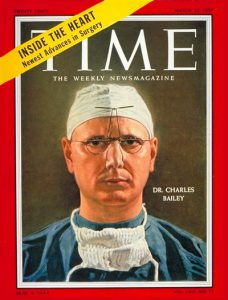
Although he faced much criticism among his colleagues at the time, today Dr. Bailey is considered the father of direct heart surgery. In fact, it was he who performed New Jersey’s very first heart surgery at Deborah. I was number eight in the line-up of this pioneering effort.
On March 23, 2019, I celebrated the 60th anniversary of my surgery. I went back to Browns Mills, New Jersey on June 27 to give a speech at their Grand Rounds for fifty doctors and surgeons. I thanked them for my life. I told them that I am now a walking antique of Deborah’s achievements. I gratefully absorbed the unconditional love that went out to both my distraught mother and me for a month before the surgery and a month after. The staff, the doctors, the nurses took care of us because they cared, and they cared no matter who you were or where you came from.
In my speech, I thanked the physicians for my life, as I stood living and breathing before them at that moment. I described the day of the surgery which remained crystal clear to me even though I was only five at the time. Why didn’t I die? I knew that I had a 50/50 chance at life or death. I was a child, but I wasn’t ignorant. I was shocked one day when I overheard the doctor telling my mother the grim facts: “The operation has a 50 percent success rate, if we don’t do the surgery, she will die within the year.”
I remember lying on the gurney and saying a final goodbye to my mother. Her grief overwhelmed me. What did I comprehend at five? I was happy, but I thought how little I knew about life. I had lived for five years, and if I were to die, what would I miss? What would my future be like? I was not old enough to imagine what lay ahead. I understood that this could be the end. I wanted to live for my mother.
As I lay on the operating table, I prayed. Although not having much knowledge of God, I instinctively knew somehow that a greater good existed.
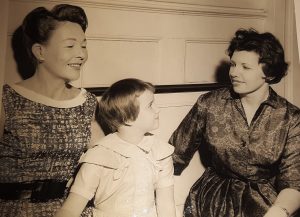 I had nowhere else to turn. To my right and my left stood doctors and nurses while scary man-made equipment loomed over my head—men, women, and machinery that would save my life. “If I could live, God, then my mother won’t have to suffer. My death will destroy her. What would become of her, if I were to die?” It was a child’s cry of love for my mother because that was the deepest love I knew. My voice was heard, and my prayers were answered. As I drifted off to sleep with the anesthesia, I did not go into the operation alone. I was not put to sleep until I knew that I would live. How is that possible? I cannot explain it, but God answered my prayers. My mother’s presence sustained me through my illness, surgery and recovery. Her love and devotion caused me to seek life.
I had nowhere else to turn. To my right and my left stood doctors and nurses while scary man-made equipment loomed over my head—men, women, and machinery that would save my life. “If I could live, God, then my mother won’t have to suffer. My death will destroy her. What would become of her, if I were to die?” It was a child’s cry of love for my mother because that was the deepest love I knew. My voice was heard, and my prayers were answered. As I drifted off to sleep with the anesthesia, I did not go into the operation alone. I was not put to sleep until I knew that I would live. How is that possible? I cannot explain it, but God answered my prayers. My mother’s presence sustained me through my illness, surgery and recovery. Her love and devotion caused me to seek life.
Dr. Bailey’s fearless spirit lives on at Deborah. Highly specialized physicians eagerly embrace the most advanced diagnostic techniques and treatments for the benefit of their patients. As a result, they successfully treat patients’ other medical institutions cannot, and are routinely sought after to run clinical trials, evaluate and utilize potentially new medical devices, procedures and medications. I dedicate this article to my mother in memory of her Yahrzeit on Tammuz 29, which corresponds to sundown, July 31.
——–
Letter from Dr. Bailey to Sandy
Dear Sandy,
Thank you so much for your lovely letter. Your happy life with your husband and three children makes an older doctor feel that he was of some good after all. Of course, Deborah is a wonderful place. Just imagine how many people they have helped. As to yourself, I am confident that the hole in your heart is thoroughly closed, healed over. It will never trouble you again. Do help Deborah whenever you can. It is one of the great health centers of America – perhaps in the world.
My very warmest wishes,
Charles P. Bailey, MD
March 1993
See Sandra’s website for more information.
The Meaning of Community
May 21, 2019
By Sid Goldstein
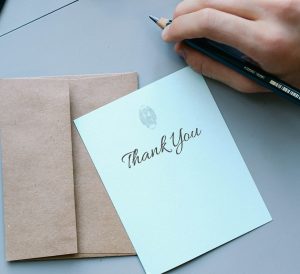
The dictionary defines community as “‘a feeling of fellowship with others, as a result of sharing common attitudes, interests, and goals.” I never understood how important that fellowship was until I got hurt. The unfortunate accident that I had visiting Las Vegas to see my family has made me understand what it truly means to be a part of a “community.”
Since Lorna and I returned home, not one day has gone by without someone from Sof reaching out to me. Whether it is a telephone call, an e-mail or a text, Sofers are checking up on me, wishing me well or just schmoozing. The number of prayers I’ve received is more than heartening. This cohesive community has surrounded me with care and concern in the face of tzuris. It is a very touching and very humbling experience. Sof Ma’arav far exceeds the textbook definition of a Community. I am honored to be a part of it, and will strive to do all that I can to support and promote our Congregation.
Mahalo to you all.
